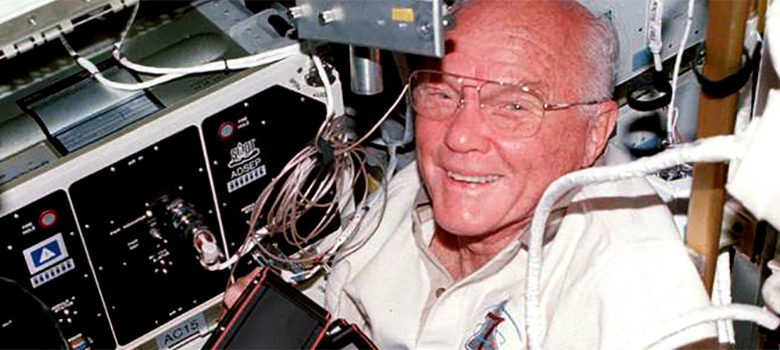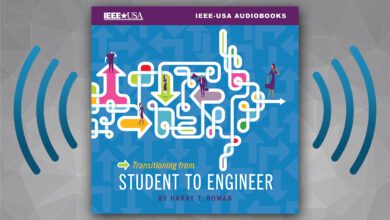
John Herschel Glenn, Jr., the first American to orbit the Earth and longtime U.S. senator, died in December at the age of 95. Glenn made history on 20 February 1962, when launched into space on the top of an Atlas Rocket in a small space capsule called Friendship 7. He was the first American to orbit the Earth; completing the three-orbit flight in four hours and 55 minutes. Glenn landed in the Atlantic Ocean, 800 miles southeast of Bermuda, and was retrieved by the destroyer USS Noa. He was the third American in space, following Alan Shepard and Gus Grissom whose missions aboard smaller Redstone rockets were short suborbital flights. Glenn later served for nearly a quarter century as a U.S. Senator from Ohio and was regarded as an effective legislator. On 29 October 1998, he returned to space (pictured above) as a payload specialist for a study on the aging process aboard the shuttle Discovery at the age of 77, becoming the oldest person to ever do so. This flight proved once again that he was a man who embraced risk and challenge.
Glenn had an early fascination with flying. When he was eight years old, he and his father went for a ride in an open-cockpit biplane. During World War II, Glenn enlisted in the Naval Aviation Cadet Program in 1942, and became a pilot for the U.S. Marine Corps. He completed nearly 150 combat missions in World War II and the Korean War. His military service earned him numerous awards, including six Distinguished Flying Crosses. In 1957, Glenn set the transcontinental air speed record, flying a Vought F-8 Crusader from Los Angeles to New York in three hours and 23 minutes.
He became known as being one of the top test pilots in the United States, and a logical candidate for the emerging space program. He eagerly volunteered when NASA requested pilots for its programs, and in 1959, he and six others ” Alan Shepard, Gus Grissom, Scott Carpenter, Wally Schirra, Gordon Cooper and Deke Slayton ” were selected. Glenn was the last living member of the group.
Glenn’s mission was more than just a round-the-world space journey. It was a psychological boost to Americans concerned about the Soviet Union’s early lead in the space race. The Soviet Union by that time had sent two cosmonauts, Yuri Gagarin and Gherman Titov, on orbital flights. His success bolstered America’s spirit and gave credence to President John Kennedy’s 1961 pledge to put men on the moon.
President Barack Obama presented Glenn with the Presidential Medal of Freedom during a May 2012 ceremony at the White House. Upon Glenn’s death President Obama released a statement:
“With John’s passing, our nation has lost an icon and Michelle and I have lost a friend, John spent his life breaking barriers, from defending our freedom as a decorated Marine Corps fighter pilot in World War II and Korea, to setting a transcontinental speed record, to becoming, at age 77, the oldest human to touch the stars. John always had the right stuff, inspiring generations of scientists, engineers and astronauts who will take us to Mars and beyond — not just to visit, but to stay. …The last of America’s first astronauts has left us, but propelled by their example we know that our future here on Earth compels us to keep reaching for the heavens.”
John Glenn joins other, now departed courageous men who embraced adventure; risking their lives to go where no man had gone before. These astronauts were supported by legions of engineers, scientists, technology managers and other professionals, many of whom were IEEE members. For many of us for whom the 1960s were their formative years, the space program sparked our interest in pursuing careers in science and technology.
Other Bytes
- Winners of the 2016 American Ingenuity Awards, which honor the country’s leading intellectuals, are profiled in detail in the December 2016 issue of Smithsonian [47(8):36-53, www.smithsonian.com]. Winners include Jeff Bezos (technology), Sarah Parcak (history), Anthony Atala (life Sciences), Aziz Ansari (performing arts), Christopher Gray (youth), the Ligo Team (physical sciences), Marc Edwards and Leeanne Walters (social progress), David Lynch (education) and Damian Kulash and Trish Sie (visual arts).
- Ten innovations with the potential to solve important problems and improve life for all are discussed in “2016 World Changing Ideas” [Scientific American, 315(6):32-41, December 2016, www.scientificamerican.com]. Selected by the editors, ideas include: carbon-breathing batteries, novel antibiotics, quantum satellites, ingestible micro robots, poverty-predicting software, clothing that cools, broad-spectrum antiviral agents, sight-reading software, paper based medical diagnosis, and super-molecules from super atoms.
- One hundred of the year’s greatest innovations, as compiled by the editors of Popular Science, are discussed in the November-December issue [“100 Greatest Innovations of 2016,” 34-87, www.popsci.com]. This is the 29th year of this annual Popular Science feature highlighting innovations in health, automobile entertainment, aerospace, recreation security home, gadgets, engineering and software.
- With a rapidly increasing human population, cities of the future will increasingly be built vertically. Indeed this is evident now with the construction of tall buildings in urban centers throughout the world, including: the Burj Khalifa (830 m.), Shanghai Tower (632 m.), One World Trade Center (541m.), Taipei 101 (508 m.), the Willis Tower (442m.), and the Trump Tower (423 m.) to name but a few. Engineers are working on innovative structural building design and materials to create these tall buildings. An example of this is the construction of the world’s first man-made structure to reach 1 km in height, the Jeddah Tower, in the Kingdom of Saudi Arabia [Sinn, R., Peronto, J., and Huizinga, M., “Engineering Jeddah Tower,”Concrete International, November 2016, 38(11):23-29, www.concreteinternational.com]. The article includes key structural engineering analysis and design considerations for this tower, as well as testing studies. This tower will be not only the world’s tallest, but one of the most slender when completed in 2019.
- FORTUNE magazine has named Facebook founder Mark Zuckerberg its “Businessperson of the Year” [pp. 65-72, 1 December 2016, www.fortune.com]. Adam Lashinsky profiles Zuckerberg and how he manages a 16,000 employee media company worth $350B, which now has 1.8B users, while at the same time being an ambitious philanthropist. Being a visionary and patient, and most importantly recruiting gifted employees who believe in what the company stands for are but a few of his strategies for success.
- In her article “The New Retirement,” Tobie Stanger discusses the importance of early planning for retirement and monitoring changes in rules, tools and attitudes as they emerge so that you will live better in your senior years [Consumer Reports, 82(1):22-31, January 2017, www.cr.org]. Stanger reports that only a quarter of Americans working today have the security of a company pension, and that the trend requiring the employee to take responsibility for their own financial well-being in retirement is only going to increase in the future. It is particularly important for younger workers to exercise the discipline to secure a sustainable retirement. This article suggests strategies for making this happen.
- A common story among entrepreneurs is that they failed many times before achieving success. Entrepreneur provides the stories of stories of some of these individuals focusing on how they became stronger because of early failures in “Millionaire Founders on How They Bounced Back” [Entrepreneur, pp. 32-40, November 2016, www.smithsonian.com].
- Information and data security is critical for business success, but also is vulnerable to threats from emergencies such as seismic activity, water, power outages and a host of other events. Janelle Penny provides five important tips on evaluating your data center infrastructure in “Evaluate Your Data Center’s Performance: Best Practices for Security, Efficiency and Savings” [Buildings, pp. 20-24, November 2016, www.buildings.com], including: 1) Building construction and layout; 2) Policies and protocol; 3) Power supply and preparation; 4) Building intelligence; and 5) Energy efficiency opportunities.
Generating electricity through wind turbines is but one method of reducing our dependency on fossil fuels. In “The One and Only Texas Wind Boom” [MIT Technology Review, 119(6):40-57, November-December 2016, www.technologyreview.com], Richard Martin discusses the growth of wind power in Texas. With nearly 18,000 megawatts of capacity, if Texas were a country, it would be the sixth-largest generator of wind power in the world. Texas land owners who have turbines located on their property enjoy substantial financial benefits.
Terrance Malkinson is a communications specialist, business analyst and futurist. He is an IEEE Senior Life Member and a member of the American College of Sports Medicine and the World Future Society. He is currently an international correspondent for IEEE-USA InSight, an associate editor for IEEE Canadian Review, and a member of the editorial advisory board of the IEEE Institute. Additionally, he leads a number of applied research projects. The author is grateful to the staff and resources of the Reg Erhardt library at SAIT Polytechnic and the Haskayne Business Library of the University of Calgary. He can be reached at malkinst@telus.net






